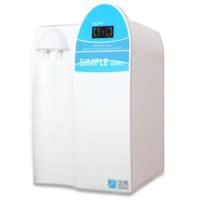A Simple and Rapid Method for Transformation of Vibrio Species by Electroporation
互联网
互联网
相关产品推荐

Recombinant-Vibrio-fischeri-ATP-synthase-subunit-batpFATP synthase subunit b Alternative name(s): ATP synthase F(0) sector subunit b ATPase subunit I F-type ATPase subunit b; F-ATPase subunit b
¥10150

上海芷昂 Simple-Q 纯水系统 实验室去离子纯水机 Simple-Q15/30
¥4560

Nrros/Nrros蛋白Recombinant Mouse Negative regulator of reactive oxygen species (Nrros)重组蛋白Leucine-rich repeat-containing protein 33 (Negative regulator of reactive oxygen species) (Lrrc33)蛋白
¥2328

Rapid Chemi AP Substrate,蛋白组学级,阿拉丁
¥4248.90

Recombinant-Vibrio-splendidus-Prolipoprotein-diacylglyceryl-transferaselgtProlipoprotein diacylglyceryl transferase EC= 2.4.99.-
¥11214

